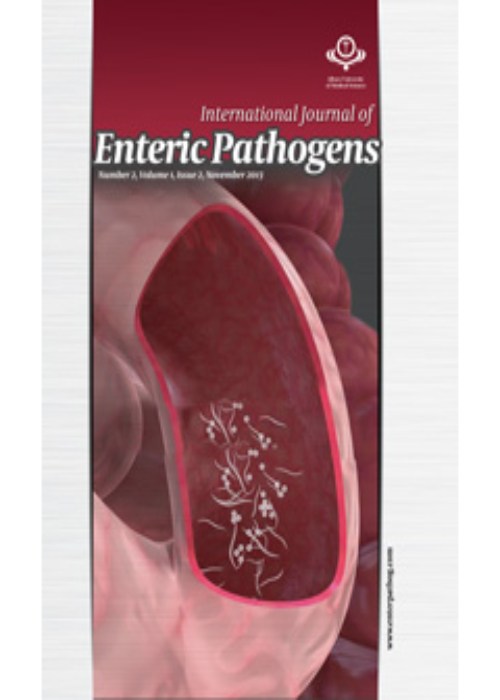Phylogenetic Grouping and Phenotypic Detection of Extended-Spectrum β-Lactamases Among Escherichia coli From Calves and Dairy Cows in Khuzestan, Iran
Author(s):
Abstract:
Background
Food-producing animals are under suspicion for the reservoir and colonization of ESBL (extended-spectrum beta-lactamase)-producing bacteria especially Enterobacteriaceae and therefore infection of the humans with them. The increasing reports on the ESBLs presence in the pathogenic and commensal Escherichia coli isolates have been a concern worldwide. These strains can be attributed to one of the main phylogenetic groups and subgroups. Several studies have shown the relationship between the phylogeny and antimicrobial resistance of E. coli strains.Objectives
The aim of this study was to analyze the phylogenetic group of ESBL-producing E. coli and detect its phenotype using the multiplex polymerase chain reaction (PCR) and combined disk method.Materials And Methods
Two hundred five E. coli fecal isolates were obtained from 103 calves (90 healthy and 13 diarrheic) and 102 dairy cows (healthy) from 8 farms in Khuzestan province, Iran. The triplex PCR method was used to allocate the E. coli isolates based on the presence or absence of 3 genes (chuA, yjaA, and tspE4.C2) to yield 4 definite phylogenetic groups and 7 subgroups. Phenotypic ESBL-producing E. coli was determined using the double disk diffusion method according to the manufacturers instructions and Clinical & Laboratory Standards Institute (CLSI) guidelines.Results
A total of 65.04% and 22.3% of isolates from calves and 70.5% and 20.5% of isolates from dairy cows belonged to phylogroups B1 and A, respectively. In addition, no isolate from the diarrhoeic calves was found to belong to group B2 and subgroups D2 and A0. A low prevalence (2/205 isolates, 0.97%) of ESBL-producing E. coli was found only in the samples of dairy cows which belonged to the phylogenetic group A and phylogenetic subgroup A1. There was no statistically significant relationship between the phylogenetic group and the production of ESBLs (P = 0.11). There was also no difference between the E. coli isolates from calves and dairy cows in the production of ESBLs (P = 0.5).Conclusion
There was no statistically significant relationship between the phylogenetic group and the production of ESBLs (P = 0.11). There was also no difference between E. coli isolates from calves and dairy cows in the production of ESBLs (P = 0.5). Based on these results, there is a low prevalence of ESBL-producing E. coli in the dairy farms of Khuzestan province. However, further large scale investigations are necessary to control the antibiotic resistance in the human and animal foodstuff. Keywords:
Language:
English
Published:
International Journal of Enteric Pathogens, Volume:5 Issue: 1, Feb 2017
Pages:
24 to 29
magiran.com/p1676572
دانلود و مطالعه متن این مقاله با یکی از روشهای زیر امکان پذیر است:
اشتراک شخصی
با عضویت و پرداخت آنلاین حق اشتراک یکساله به مبلغ 1,390,000ريال میتوانید 70 عنوان مطلب دانلود کنید!
اشتراک سازمانی
به کتابخانه دانشگاه یا محل کار خود پیشنهاد کنید تا اشتراک سازمانی این پایگاه را برای دسترسی نامحدود همه کاربران به متن مطالب تهیه نمایند!
توجه!
- حق عضویت دریافتی صرف حمایت از نشریات عضو و نگهداری، تکمیل و توسعه مگیران میشود.
- پرداخت حق اشتراک و دانلود مقالات اجازه بازنشر آن در سایر رسانههای چاپی و دیجیتال را به کاربر نمیدهد.
In order to view content subscription is required
Personal subscription
Subscribe magiran.com for 70 € euros via PayPal and download 70 articles during a year.
Organization subscription
Please contact us to subscribe your university or library for unlimited access!


